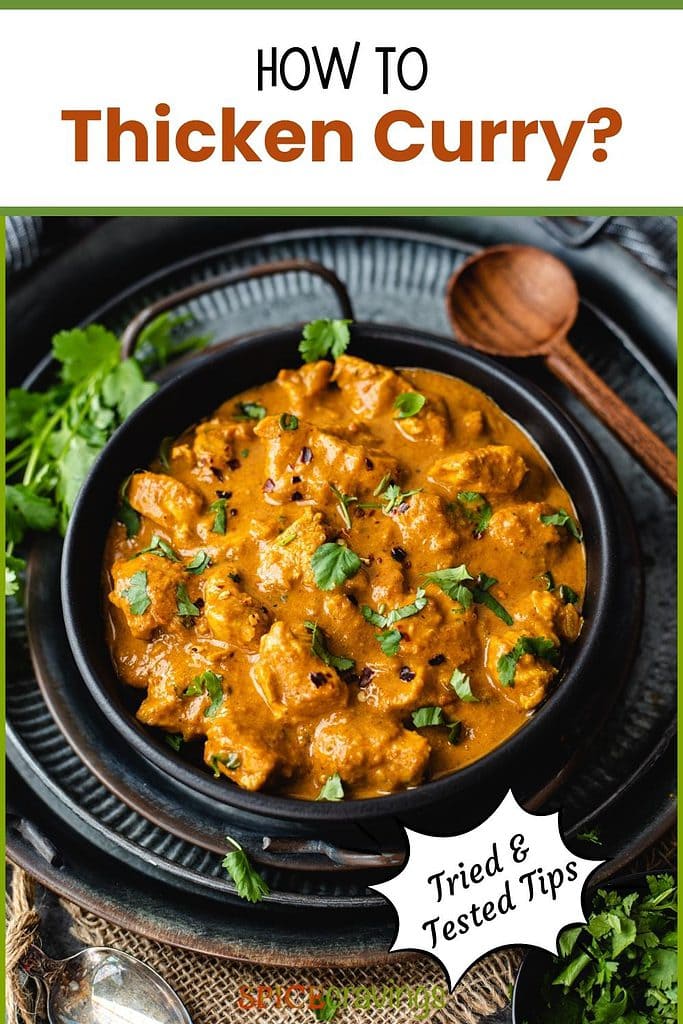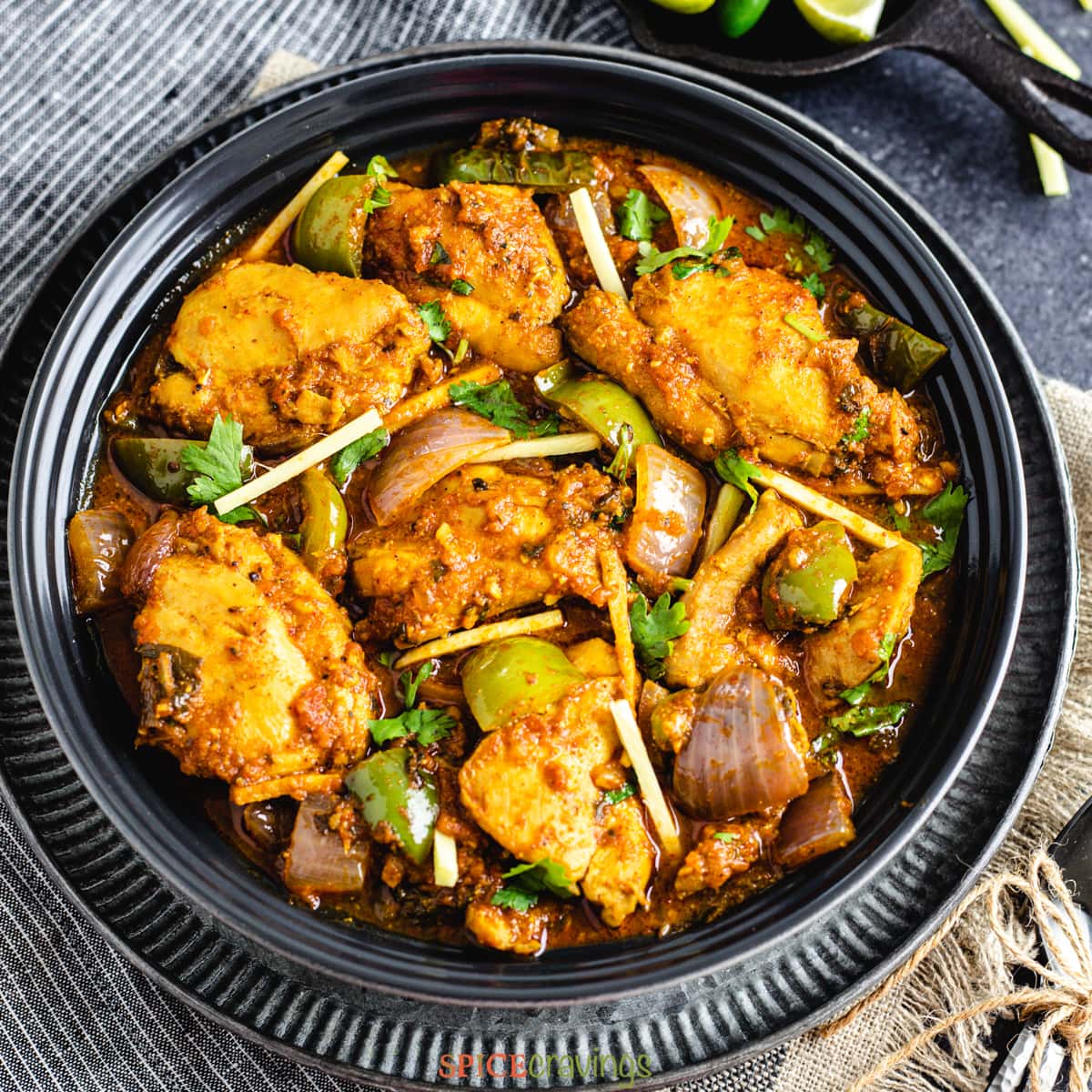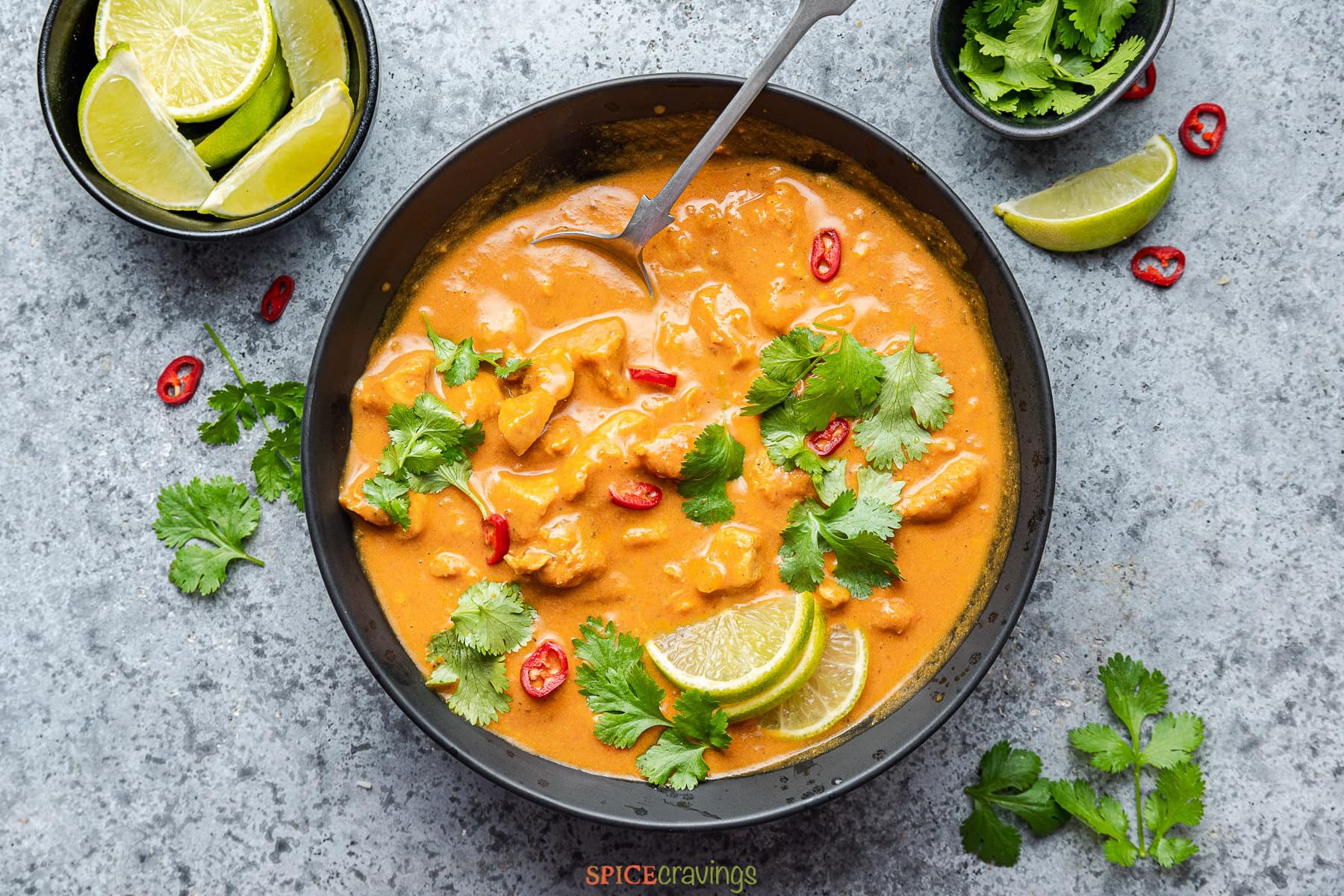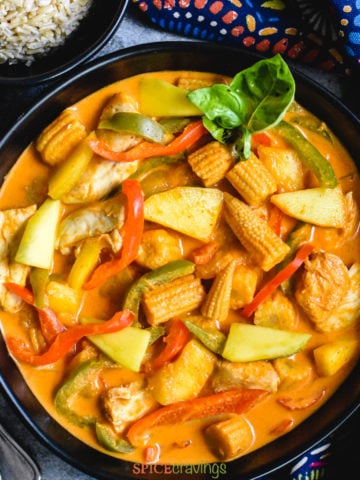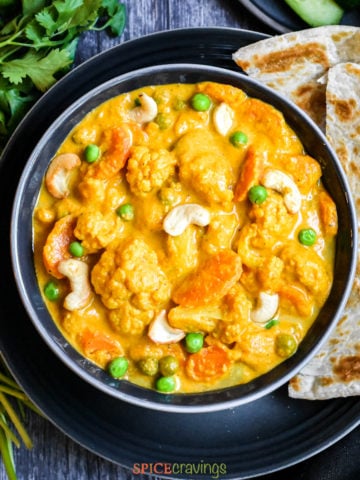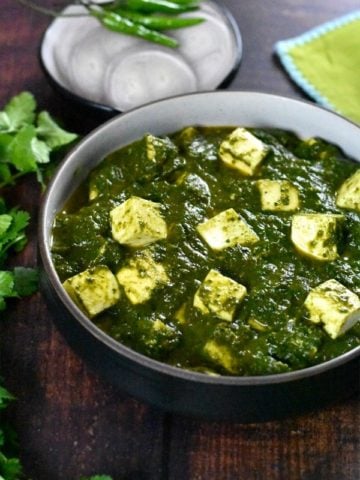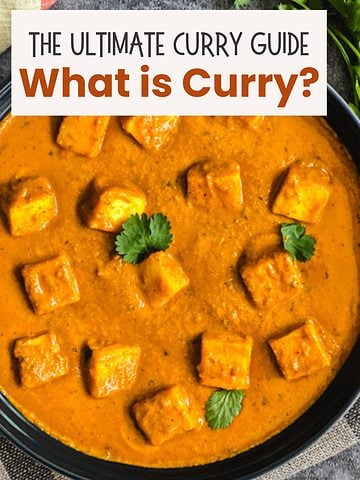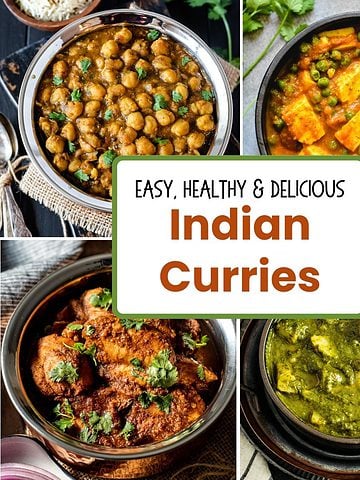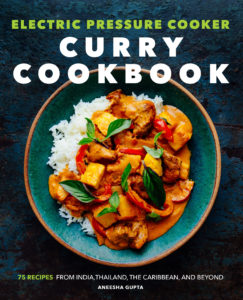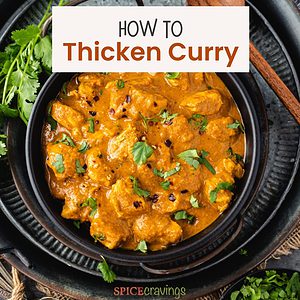Nothing beats a homemade curry. It’s a labor of love that celebrates a number of different cultures and cuisines.
But it is disappointing (to say the least) when the consistency of curry doesn’t turn out as expected. Well, there’s no need to worry! I have got you covered with plenty of curry thickening techniques that will ensure you achieve the desired consistency every time. Whether you are a novice chef or a seasoned cook, these tricks to the trade work every time. Keep these in your back pocket any time cooking in the kitchen goes a bit awry. Let’s get started!
What Is Curry?
Curry is a meal or dish featuring meat or vegetables that have been heavily seasoned with aromatics, spices, and chiles. The end result can be dry or wet (more on this below) and is often served with rice or flatbread. Interested to learn more about curry? Check out this detailed article on curry, the origin, taste, components, and recipes of curries around the world.
Curry Consistency: Dry vs. Wet
The consistency of curry is a personal choice and varies all over the Indian subcontinent. Restaurant-style curries tend to be thicker than homestyle curries, while some other curries are strictly meant to be spiced meat and nothing more. Here is the difference between the two: Dry (Semi-Dry): Just like kadai chicken or chilli paneer, dry or semi-dry curries have very little to no sauce. The recipes are made with just enough sauce or marinade to coat the accompanying protein without any extra gravy. Wet (Saucy): Wet curries are more recognizable and examples include chicken coconut curry, lamb korma, and Thai Massaman curry. These curries are made with enough liquid (i.e. broth, water, coconut milk) to create a sauce or gravy so that the main ingredients are swimming in the dish.
How Thick Should Curry Be?
Curry should be thick enough so that the sauce coats the main ingredients. The end consistency also depends on what it is served with - rice or flatbread. Rice: If served with rice, it should have a pourable consistency, much like a sauce or gravy. The flavorful sauce mixes well with rice and gets soaked up by the grains. Flatbread: If served with naan, roti, or paratha, it should have a scoopable consistency. In other words, it shouldn’t have drips running down the spoon and you should be able to ‘scoop’ it up with flatbread.
What Makes Curry Watery
If you’ve ever wondered “why is my curry too watery”? here are some common causes:
Too much liquid or broth is added during cooking.Short cooking time or not enough simmering time for the sauce to reduce.Low-heat cooking: you need medium-high to high heat to cook off excess liquid.Cooking the curry with the lid: all the evaporated water will collect in the lid and get added back into the curry.Excess water or juices from the ingredients. For example, unthawed frozen ingredients, unbeaten yogurt, or watery/ juicy vegetables like peppers, zucchini, eggplant, spinach, or tomatoes.
How to Thicken Curry
The following is a list of the best ways to thicken curry while cooking. The techniques below can be chosen based on time, availability of ingredients in your pantry, and personal taste.
1. Cook the Base Ingredients
Most curry recipes start with a base of onions, garlic, ginger, and sometimes tomatoes. It is important to cook these ingredients in hot oil or ghee so that their moisture cooks out and can then form a thick paste with the spices, just like this Onion-Tomato Bhuna Masala. Cook the aromatics until the oil separates, which is a sign the base is ready for the liquid to be added.
2. Simmer / Reduce
Continue cooking the curry, uncovered, over a low simmer until thickened. Stir occasionally to prevent burning. The longer you simmer the curry, the thicker it will become. This is my preferred method, but a slow one. Use one of the methods below if short on time.
3. Add Tomato Paste
Whisk in 2 tablespoons tomato paste and simmer for an additional 4-5 minutes. It’s a great option for tomato-based curry sauces.
4. Mash or Puree Vegetables
Mash or puree 1-2 boiled potatoes, squash, or carrots. Add to the curry and simmer for 5-10 minutes more, or until thickened.
5. Puree a Portion
Take a ladle full of curry with plenty of chunky vegetables (refrain from adding the meat) and blend it. Add the blended portion back to the curry and simmer for 2-3 minutes, or until thickened.
6. Greek Yogurt or Heavy Whipping Cream
Remove the curry from the heat (or set over the lowest heat setting) and stir in 2-3 tablespoons of full-fat Greek yogurt or heavy whipping cream. Whisk until smooth and combined. It’s important to add the yogurt/ cream over a low heat setting, or the dairy will curdle.
7. Coconut Cream or Coconut Milk
Whisk in 2-4 tablespoons of full-fat blended coconut milk or cream. Simmer until slightly thickened. Coconut cream is best used for Thai or Southeast Asian curries.
8. Grated / Shredded Coconut
Add 2-3 tablespoons grated/ shredded/ desiccated unsweetened coconut to the curry sauce. Simmer for 2-3 minutes, or until thickened. Fresh coconut is best for Thai or South Indian curries.
9. Cashew Paste / Ground Nuts
Make a quick nut paste by soaking a handful of cashews or blanched almonds in hot water for a few minutes. Blend until smooth, then whisk into the curry. If almond flour is all you have on hand, stir in 2-3 tablespoons and simmer until thickened. Poppy seeds and melon seeds are also common thickening agents, but these are usually harder to find in stores.
10. Make a Roux
Melt 1 tablespoon of butter in a saucepan over medium heat. Add 1 tablespoon of all-purpose flour. Cook on low heat until the mixture forms a paste, then continue to cook until it has a nutty aroma. Add the roux into your curry with constant stirring. It should thicken right away.
11. Cornstarch / Arrowroot Slurry
Combine 1 tablespoon cornstarch or arrowroot flour with 2-3 tablespoons water or curry liquid, and whisk until smooth. Add to the curry sauce and simmer for 2-3 minutes to rid of the raw flour flavor. Note: It’s essential to mix the starch with liquid prior to adding it to the curry. The flour will create lumps if added directly into the saucepan.
12. Pureed Lentils
Add 2-3 tablespoons of pureed cooked lentils to the curry. Simmer for 2-3 minutes, or until thickened. The lentils will alter the flavor slightly, but boost the nutritional value, too.
13. Peanut Butter (Or Nut Butter)
Whisk in 1-2 tablespoons unsalted natural peanut butter (or cashew butter or almond butter) when the curry is done cooking. The slightly roasted peanut flavor works best in Asian curries, especially Thai massaman, or panang.
Popular Curry Recipes on the Blog
These are all part of the Curry Recipes collection:
More on Curry
Check out more Popular Curry Recipes in this Instant Pot Curry Cookbook:
📖 Recipe
